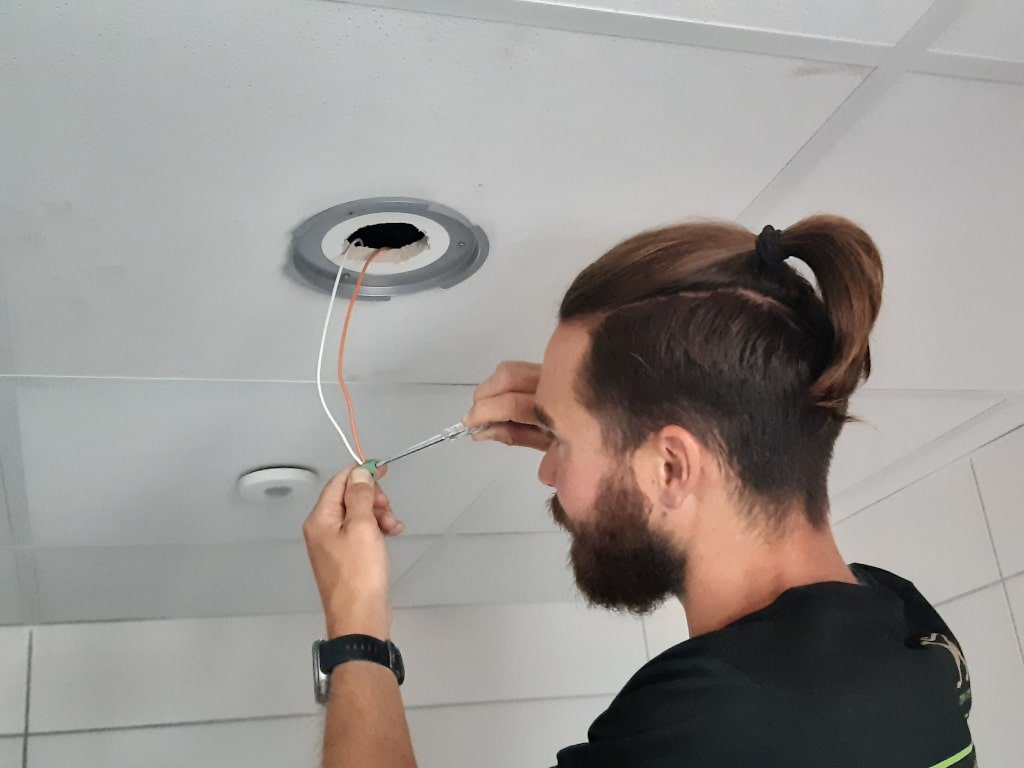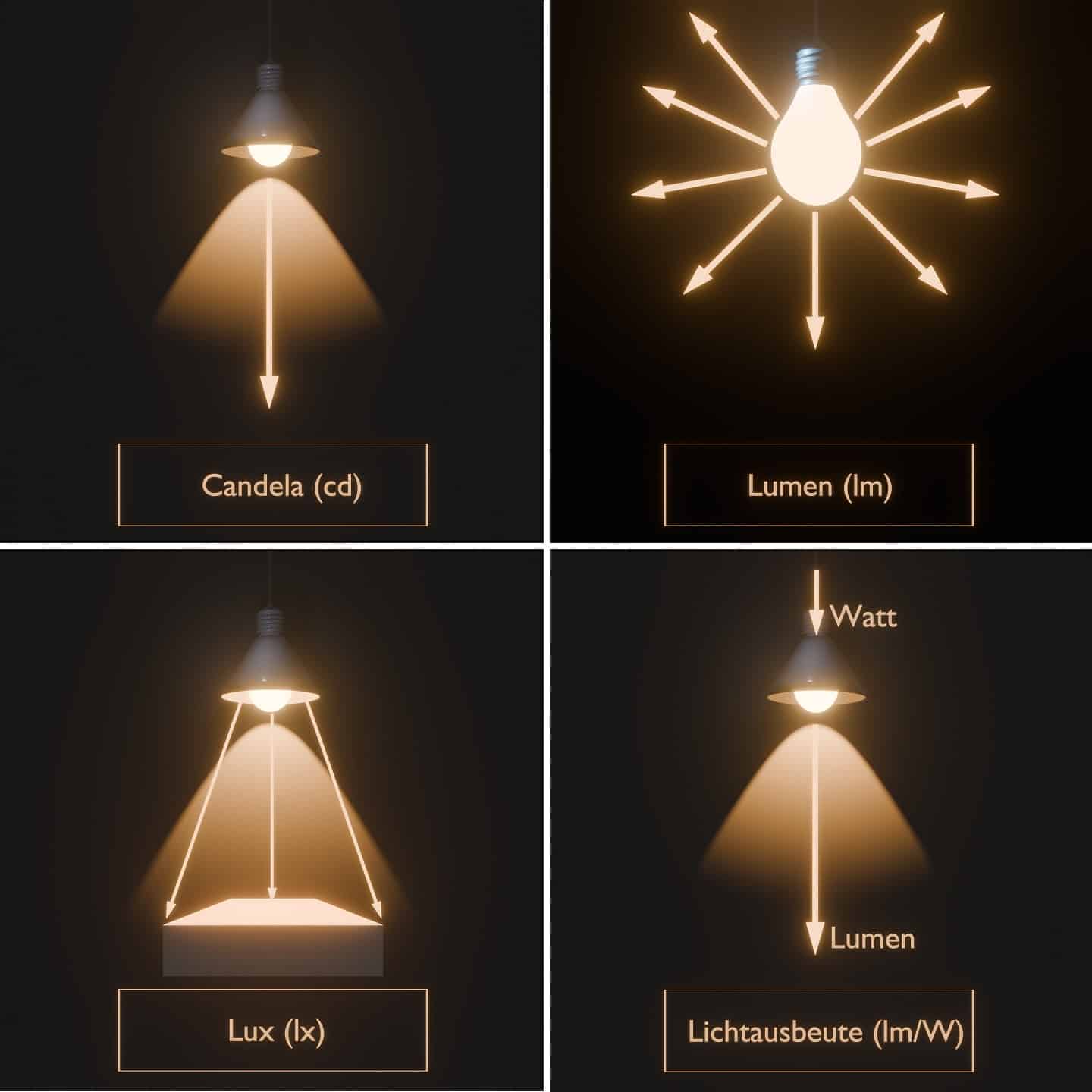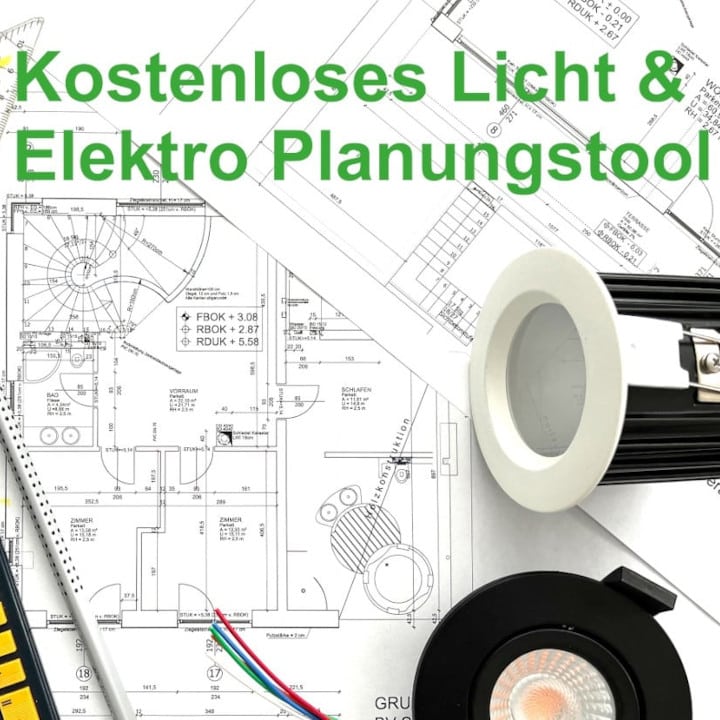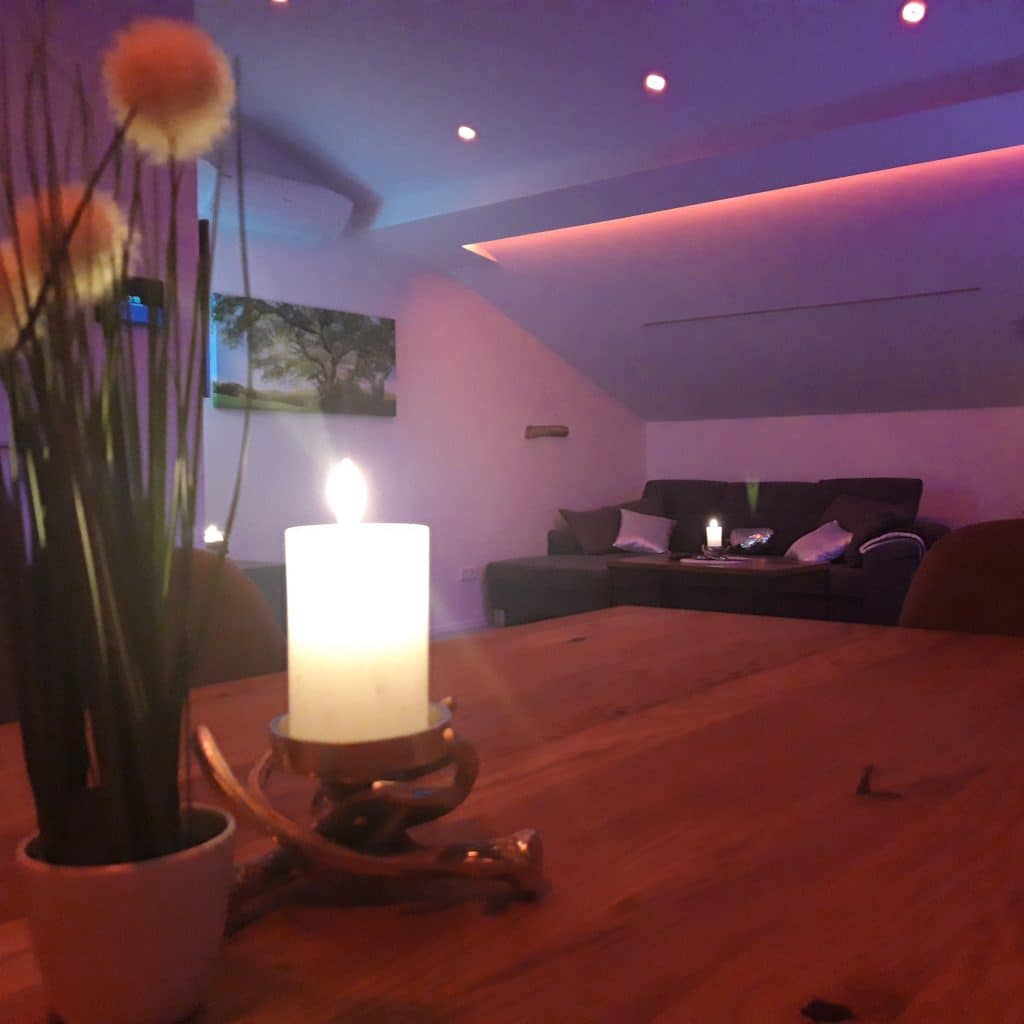COB LED strips: A first overview
COB LED strips are one of the most exciting technologies within LED strips. This article therefore deals extensively with all the topics relating to these products. COB technology is explained as well as the advantages and disadvantages. We go into detail about installation and dimming options, present a few products with their special features and conclude with questions and best-practice options.
The innovative COB technology (chip-on-board) enables a higher luminous efficacy and a more uniform light distribution compared to conventional LED strips. The new generation enables the realization of LED strips without dots, or in other words, the individual LEDs are no longer recognizable and a homogeneous light image is created. In our online store you will find a wide selection of COB LED strips, which are specially designed for a wide range of applications and impress with their outstanding performance.

COB technology

COB technology, short for “chip-on-board”, describes a process in which several LED chips are attached directly to a circuit board. In contrast to traditional LEDs (knowledge article: LED explanation), which are each provided with a phosphor layer in their own housing, COB technology does without this housing. The phosphor layer is important for generating white light and determining the color temperature (such as warm white).
With COB LED strips, the chips are placed close together and coated with a common phosphor layer. This arrangement creates a continuous, homogeneous band of light without the typical points of light that can be seen with conventional LEDs. This makes COB strips particularly suitable for applications where uniform and aesthetically pleasing lighting is required.
CUT ANYWHERE technology
Traditional LED strips have fixed cut marks that are often only set at intervals of 5 to 10 centimeters. This means that it can be difficult to cut the strip to the exact length required, which is particularly problematic for projects that require precise dimensions or for irregular surfaces. In addition, unlit areas can occur after cutting or the light distribution can become uneven, especially if the strip is cut in unintended places.
In contrast, cut-anywhere LED strips allow the strip to be cut almost anywhere. This flexibility allows you to easily install the strips around corners, edges or in complex shapes. Cut-Anywhere LED strips are designed so that the quality and distribution of light remains uniform even after cutting. This ensures continuous illumination without dark spots and aesthetic losses.

Advantages and disadvantages
- Uniform light distribution: COB technology enables uniform light output without visible light points, ideal for homogeneous lighting.
- Wide beam angle: With a beam angle of 180°, COB LED strips offer wider light distribution than conventional LED strips (120°), ideal for flat LED profiles with diffusers.
- Efficient heat dissipation: COB technology improves the heat dissipation of the LED chips, which extends their service life.
- Stepless dimming: Thanks to PWM, COB strips can be dimmed continuously and precisely.
- Maintenance-free: As with conventional LED strips, no maintenance is required.
- Versatility: Available in various color temperatures and versions (warm white, dual white, RGBW), COB LED strips offer a high degree of flexibility.
- High brightness: The dense arrangement of the LED chips ensures a high luminous efficacy per unit area.
- Limited color selection: There are fewer color options due to the common phosphor layer, and color mixing is more complex with RGBW.
- Mounting requirements: Correct installation and cooling are crucial for optimum performance, which is why aluminum profiles are often used.
- Segment failure in the event of damage: If an LED chip is damaged, the entire segment (approx. 25-75 mm) fails and cannot be repaired. The same issue applies to LED strips. The short segment is usually simply replaced and connected using an LED connector
- Large beam angle: Although this is also listed as an advantage, it can also be a disadvantage, as directional light can also be desirable
Mounting the COB LED strips
The installation of COB LED strips is simple and requires no tools. Make sure to attach the strips to a clean, dry surface. Our COB strips have a 3M adhesive strip on the back and can be glued on directly. For optimum performance, it is important to cool the strips properly and use aluminum profiles for heat dissipation if necessary. In addition, these LED profiles offer mechanical protection and can be fitted with a clear or opal cover. This combination of COB LED strips, low aluminum profile and satin cover creates a homogeneous light image in perfection. You can find detailed tips, tricks and best-practice examples for installation in our tutorial: Connecting, mounting and connecting LED strips
Our COB-Stripe technologies:

Warm white LED strips provide a cozy, warm light that is perfect for living and sleeping areas. However, the simplest version of COB strips should not be underestimated here. The diverse application possibilities are almost limitless thanks to very simple control.

CCT LED strips (Correlated Color Temperature) allow the color temperature to be continuously adjusted from warm white to cool white. This makes them particularly versatile and suitable for work areas where different light temperatures are required depending on the activity.

In addition to the RGB colors, RGBW strips also offer an additional white channel. This makes it possible to produce both colored light and pure white light. This versatility makes them ideal for living spaces where both colored accents and functional white light are required.
COB LED strips dimmable via PWM
We recommend the use of suitable LED dimmers and control units to control COB LED strips. All our COB strips are dimmable and can be controlled with appropriate PWM dimmers. This allows the brightness and color to be adjusted to individual requirements and creates a pleasant lighting atmosphere.
Frequently asked questions
What is a COB LED strip?
A COB stripe uses chip-on-board technology, in which several LED chips are mounted directly on a circuit board. This results in a higher luminous efficacy and uniform light distribution without visible light spots.
Are COB strips dimmable?
Yes, COB strips can be dimmed using PWM(pulse width modulation). By using suitable dimmers, the brightness can be adjusted as required and the color can also be set.
Which is better LED or COB?
COB LED strips offer several advantages over conventional LED strips, including higher luminous efficacy and more uniform light distribution. However, the choice is smaller and it requires careful mounting and cooling. The choice depends on the specific requirements and area of application.
Can COB LED strips be cut?
Yes, COB strips can be shortened at the marked points. However, follow the manufacturer’s instructions and use suitable tools to avoid damage.
Can COB strips be connected?
Yes, COB LED strips can be connected to each other. Special LED strip connectors, LED connecting cables or soldering techniques are available for this purpose, which enable the strips to be connected seamlessly. Make sure to insulate the connections correctly and ensure that the power supply is sufficient to operate the entire length of the connected strips.
For this we recommend our article Calculating the LED power supply.
Wide selection of COB LED strips in the online store.
Discover the many possibilities for your project!
Many more guides, tutorials and more
Finally, we would like to recommend our service area. There you will find numerous other articles such as the one we just read (e.g. lighting units, …), extensive tutorials (e.g. gluing LED strips, the light-emitting diode, DMX512, …), free tools(online lighting design) and much more:

popular posts on our blog:

The most important quantities and units relating to light are explained simply and clearly in this article

Numerous useful tools are combined here in one tool. Voltage drop calculator, determine number of spots, calculate power, and much more.

What to look out for in a recessed spotlight for the smart home? This and other exciting topics are discussed in the article.
